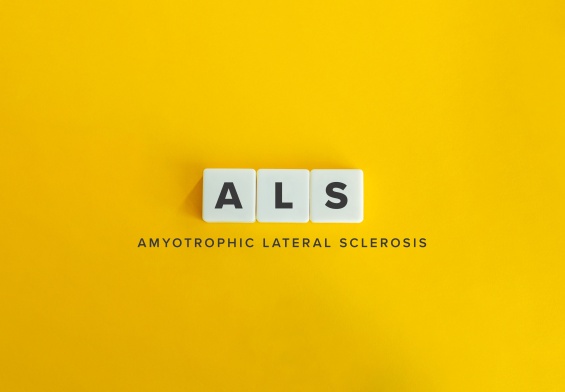Originally posted on: https://www.homewatchcaregivers.com/st-pete-beach/about-us/blog/2024/january/the-benefits-of-in-home-care-vs-assisted-living-/
In-Home Care: Aging at Home with Independence
In the realm of senior and special needs care, in-home care stands out as a beacon of independence and personalized attention. This option resonates deeply with the concept of ‘aging at home or “aging in place”,’ where comfort and familiarity reign supreme. In the sanctity of their own homes, seniors and individuals with special needs can enjoy a sense of continuity and connection to their cherished memories and possessions. This environment plays a crucial role in maintaining mental and emotional well-being, especially for those grappling with conditions like dementia, where familiar surroundings can provide a calming effect and a sense of security.
The beauty of in-home care lies in its inherent flexibility and customization. Each care plan is as unique as the individual receiving it, tailored to their specific medical needs, daily routines, and personal preferences. This approach allows for a level of one-on-one attention that is challenging to replicate in more institutional settings. Caregivers in the home setting can adapt to the changing needs of their clients, providing everything from basic assistance with daily activities to more specialized care for conditions like disability or dementia. This adaptability not only ensures that physical needs are met but also fosters a deeper emotional connection and understanding between the caregiver and the individual.
In-home care promotes a sense of continued independence and autonomy, which is a vital aspect of aging with dignity. Seniors and individuals with special needs are encouraged to engage in their usual activities and hobbies, with support tailored to their abilities. This encouragement helps maintain a sense of normalcy and purpose, contributing significantly to their overall quality of life. Additionally, the involvement of family members in in-home care is more direct and hands-on, offering peace of mind and a sense of involvement that is deeply valued. Families can work closely with caregivers to ensure that their loved ones are receiving care that aligns with their wishes and needs, creating a collaborative and supportive care environment. This partnership not only enhances the care received but also strengthens family bonds, making in-home care a deeply personal and comforting choice for many.
Assisted Living Facilities: A Community of Care with Considerations
Assisted living facilities, while offering a structured community environment, present a different set of dynamics compared to the personalized and familiar setting of in-home care. These facilities provide a communal living space where seniors and individuals with special needs can interact with peers and participate in organized activities. This setting can be beneficial for social interaction, offering a variety of group activities and events. However, it’s important to note that this communal approach may not suit everyone, especially those who value their privacy and independence highly, aspects that are more inherently preserved in in-home care.
In assisted living facilities, residents often find themselves adapting to a new environment, which can be a significant shift from the comfort and familiarity of their own home. While these facilities are equipped with professional staff and are designed to ensure safety and provide care, they may not offer the same level of personalization and emotional connection that a caregiver in a home setting can provide. The one-size-fits-all approach in assisted living might not adequately address the unique preferences and routines of each individual, potentially impacting the overall sense of contentment and well-being.
Furthermore, the transition to an assisted living facility can be challenging for those who have spent a lifetime in their own home, surrounded by memories and personal belongings. The sense of loss of one’s home and the ensuing adjustment to a new living situation can be significant. In contrast, in-home care allows individuals to maintain their lifestyle, routines, and connections to their community and family, which are crucial elements for emotional health and quality of life. This level of familiarity and continuity is a fundamental advantage of in-home care, making it a more appealing choice for many who wish to age gracefully in the comfort and security of their own home.
Comparing Costs and Quality of Life: The Edge of In-Home Care
When evaluating the costs and quality of life between in-home care and assisted living facilities, in-home care often emerges as the more advantageous choice, particularly when considering the long-term impact on both finances and personal well-being. In-home care, with its adaptable nature, allows for a more controlled and often more cost-effective approach to care. Unlike the fixed costs associated with assisted living facilities, which include services that may not be necessary for every individual, in-home care can be tailored to fit specific needs and budgets. This customization means that you only pay for the care you need, when you need it, without bearing the burden of additional costs for services that are superfluous to your requirements.
The quality-of-life aspect is another area where in-home care frequently outshines assisted living facilities. In-home care nurtures the emotional and psychological well-being of individuals by allowing them to remain in their familiar surroundings. This continuity of environment is particularly beneficial for those with cognitive impairments, such as dementia, who may find the disruption of moving to a new and unfamiliar place disorienting and stressful. The comfort of home, with personal memories and a sense of belonging, can have a profound positive impact on an individual’s mental health and overall happiness.
In-home care offers a level of personalized (one on one) attention and care that is challenging to replicate in an institutional setting. Caregivers in the home adapt to the personal habits, schedules, and lifestyles of their clients, fostering a deeper, more meaningful caregiver-client relationship. This individualized care approach not only ensures that physical needs are meticulously met but also caters to the emotional and social needs of individuals, which are just as crucial for a fulfilling life. In contrast, the more generic care approach in assisted living facilities may not provide the same depth of personal understanding and emotional support, making in-home care a more appealing option for those seeking a comprehensive, empathetic approach to care in their later years.
Making the Right Choice: Decision-Making Factors
The process of selecting the most suitable care option, whether it’s in-home care or an assisted living facility, involves a multifaceted decision-making approach. Central to this decision are the individual’s specific needs and preferences, which should guide the direction of care. It’s essential to evaluate the level of care required, considering factors such as the degree of medical attention needed, assistance with daily activities, and any specialized care for conditions like dementia or physical disabilities. This assessment helps in determining whether the constant availability of professional care in an assisted living facility is necessary, or if the more personalized, one-on-one care provided at home would be sufficient and more beneficial.
Another critical factor is the individual’s lifestyle and social preferences. For some, the familiarity and comfort of their own home, surrounded by personal memories and belongings, is paramount. This environment can be particularly comforting for those with cognitive impairments or those who cherish their independence and privacy. In contrast, others might thrive in the social atmosphere of an assisted living facility, where they can interact with peers, participate in organized activities, and enjoy a sense of community and belonging. It’s also important to consider the potential for social isolation at home and whether in-home care would provide enough opportunities for social engagement and mental stimulation.
Family involvement and support play a significant role in this decision. The ability and willingness of family members to be involved in the care process, whether directly or in a supervisory role, can influence the choice between in-home care and an assisted living facility. In-home care often requires more active involvement from family members, from managing caregivers to ensuring the home environment is safe and suitable for care. On the other hand, assisted living facilities offer a more hands-off approach for families, as these settings provide comprehensive care and supervision. Additionally, factors such as the geographical proximity of family members, their ability to respond to emergencies, and their capacity to provide emotional support are crucial considerations. Ultimately, the decision should be made collaboratively, involving the individual receiving care, their family, and healthcare professionals, ensuring that it aligns with the individual’s needs, preferences, and overall well-being.
Embracing the Future: A Thoughtful Conclusion on Care Choices
In the journey of choosing the best care for our seniors and individuals with special needs, in-home care stands out as a beacon of personalized, compassionate support. It offers the unparalleled advantage of allowing individuals to remain in the comfort and familiarity of their own homes, a factor that significantly enhances emotional well-being and quality of life. This option not only ensures that care is tailored to the unique needs and preferences of each individual but also fosters a sense of independence and dignity that is often lost in more institutional settings. In-home care, with its flexibility and adaptability, aligns seamlessly with the desire to maintain a normal life rhythm, surrounded by personal memories and the warmth of a familiar environment. As we look towards the future of senior and special needs care, in-home care emerges as a clear choice for those seeking a holistic approach that honors the individuality and preferences of each person, making their golden years as comfortable and fulfilling as possible.
Resources
- Hospice Care in Assisted Living Facilities Versus at Home: Results of a Multisite Cohort Study
- Comparative Costs of Home Care and Residential Care
- The comparison of quality of life among people with mild dementia in nursing home and home care −−a preliminary report
- Patient Outcomes After Hospital Discharge to Home With Home Health Care vs to a Skilled Nursing Facility



